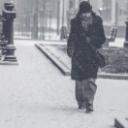Unit 6 Fire英语教案

教学目标
一、教学目标与要求
本单元的教学目标是使学生能熟练掌握一般过去时没过去进行时的用法。学习并运用一些表示禁止和警告的用语。围绕火灾这一日常生活中与人民生命财产密切相关的题材,使学生了解火灾的危害。
二、教学重点与难点
l.重点词汇might;case;collect;trap;control;escape;rescue;close;(get)closeto;wonder;light(v.);lookout;inthatcase;belongto;putout
2.重要句型1)Whatalotofsmoke!2)Don’tgotoyourroomtocollectyourthingsoryoumaybetrappedbythefire.
3.语法复习动词一般过去时并掌握过去进时的用法。
4.日常交际用语禁止和警告l)Lookout12)Becareful!3)Takecare!4)Nevertrytocarrythepanoutofthekitchen.5)Don’ttakethelift,astheliftmaybecometrappedbetweenfloors.Usethestairs.
教学建议
课文分析
这是一篇记叙文,记述了圣保罗大火的起因、火灾所造成的损失、营救工作艰难的原因等。本文主题突出,首尾呼应,结构如下:
Part1(Paragraph1)OnFeb.4th,1974,afiredestroyedSaoPaulo''''snewestbuilding,theCapitalBuilding,andkilled220people.
Part2(Paragraphs2-5)Thedetailsofthefire
(Paragraph2)Thefirebrokeoutonthe11thfloorbyanelectricalfire.
(Paragraph3)Morethan300peopleweretrappedabovetheIfire.
(Paragraph4)About70peopleescapedfromthefireinthehelicopters.
(Paragraph5)Thefirefighterscouldn''''tgetclosetothepeopletrappedinthefire.Part3(Paragraph6)Thefirelastedabout4hours.
本文围绕when,where,what,why,howlong等问题,讲述了圣保罗大火的来龙去脉,主要内容如下:
OnFebruarythe4th,1974,abigfirebrokeout,whichdestroyedthenewestbuildinginSaoPauloandthecars,whichbelongedtotheofficeworkersinthatbuilding.
Perhapsthefirewascausedbyanelectricalfireofanofficeonthe11thfloor.Theofficeworkerstriedtoputoutthefirebuttheycouldn''''tcontrolit.
Thepeoplebelowescapedintothestreetbut300peopleabovethe11thfloorweretrapped.Therewerenofireescapesinthebuilding.Somepeopleclimbedtotheflatroofofthebuilding.Butthesmokewastoothickforthehelicopterstorescuethem.Inthestreetthereweresomanypeoplethatthefirefighterscouldn’tgetclosetothebuildingandtheladderswerenotlongenoughtoreachpeople.Sothefirelastedfourhoursand220peoplewerekilledinthefire.
听力分析
Step1.Preparationforlistening.
在未听之前,教师让学生看P122页的练习
Setp2.Playthetapeanddoexercises
Atfirst,playthetapeuntiltheSscouldunderstandit.Thenplayagaindosomeexercises.每题先放一遍,提问学生大概的内容。然后再放两遍,让学生做练习。
Setp3.RepeattheDialogue
LettheSscompletelyandrepeatsomeoftheparagraphs让学生能够复述其中的一段,如:
Iwenttoseeifitwasarealfire.Therewereflamescomingoutoftheceiling.Iquicklywentbacktomydesktocollectmybag,whichhadinitmyhousekeys,mycarkeys,andquitealotofmoney,asIhadbeentothebankearlierthatmorning.ItwasaFriday,yousee,andweweregoingawayfortheweekend.
写作分析
StepIUnderstandthemeaningofthewords
firewoodandbedclothes,bedclothes=sheets,blanketsandsoonforabed(nottheclothesapersonwearsinbed).
StepIITelltheSstoreadallthesentencesfirst,thentonumbertheminthecorrectorder.
Answers:161012748113592
StepIIIGettheSstowriteashortpassage
usingconjunctionsoradverbswhennecessary.Hereisamodel:
Lastyearwewenttostayinasmallhouseinthecountry.Whenwearrivedatthehouse,itwasraining.Thehousewascoldandthebedclotheswerenotdry.Wecollectedsomefirewoodfromthewoodandlitalargefire.Then/Nextweputthebedclothesinfrontofthefiretodrythem.Afterthatwewentintothevillagetobuysomefoodfromthevillageshop.Aswewerewalkinghome,wesawsmokecomingoverthehill.Wethoughtthatthesmokewascomingfromthechimney.Howeverwhenwegotnearthehouse,wesawthatthesmokewascomingfromawindow.Thebedclothesthatweredryinginfrontofthefirehadcaughtfire.Luckilythefloorwasmadeofstone,sothehousehadn''''tburntdown.Sadlyallthebedclotheshadbeendestroyedinthefire.
GettheSstochecktheiranswersinpairs,thencheckwiththewholeclass.
重点难点讲解
辨析catchfire,beonfire,setfireto,getburnt
catchfire“着火”,着重强调动作。
beonfire“烧着”,着重强调状态。
setfireto“点燃”,“放火烧”,着重强调动作。也用set…onfire来表达这一意义。
getburnt指“烧伤”,“烧着”。强调结果。
Don’tletyourdresscatchfire.别把衣服烧着了。
Thehouseisonfire.房子着火了。
Theenemysetfiretoourbuildings.==Theenemysetourbuildingsonfire.敌人放火烧了我们的房子。
Don''''tplaywithfire;youmaygetburnt.别玩火,你会烧伤的。
辨析beout,putout,goout
三者都可以表示火或灯的“熄灭”。
beout表示“熄灭”的状态,还可以表示“在外面”,“不在家”。
goout指“灯,火”熄灭,是不及物动词短语,主语是灯或火等。也有“出去”之意,强调动作。
putout指“熄灭”灯火,是及物动词短语,其宾语只能是表示灯火一类的词。例子如下:
Thelightintheroomisout.房间里的灯熄了。
HissonisoutinAmerica.他的儿子远在美国。
Oneoftheplane’sengineswentout.飞机的一个发动机灭火了。
Sheputthefireoutandwenttobed.她熄灭炉火后上床。
辨析floor,storey
相同点:这二个词都有表示楼层的含意。
不同点:如果指第几层时,则用floor,同时指每一层室内行走的地面,onthefloor由此而来。floor英美的表达也不同
*
当表示楼房的高度,说房子有几层时用storey。storey表示上下两层之间的空间。
*
例子如下:
Thisisaten-storeybuilding=这栋楼有十层(高)。
Thisisaten-storeyedbuilding./Thisisabuildingoftenstoreys./Thebuildingistenstoreyshigh.
Iliveonthefirstfloor.(美)Iliveonthegroundfloor.(英)我住在一楼。
辨析collect,gather
gather把分散的东西集中在一个地方,例如收集庄稼,树叶,花草等。
collect按计划或为了某个特定的目的把东西经过仔细挑选后收集起来。
Shegatheredthefallenleaves.她把落叶扫拢。
Hecollectedfactstoprovethetheory.他收集资料以证明理论。
注意:表示一般意义的“收集;聚集”时,collect可用来代替gather,但gather不能代替collect以表示特殊意义。
Ienjoycollectingstamps.我喜欢集邮。(这里的collect不能用gather来代替。)
Peoplegathered/collectedtowatchthefight.(这里的两个词可互换。)
辨析catchfire与beonfire.
catchfire强调动作,属于非延续性动词。
beonfire强调状态,属延续性动词。
Ahousecaughtfirelastnight.
Thehousehasbeenonfireforanhour.此句中的“hasbeenonfire”不可改为“hascaughtfire”.
辨析getcloseto与becloseto
getcloseto强调“靠近”这个动作。
becloseto强调“离……近的”这一状态。
Don’tgetclosetothefire.It’sdangerous!
Ourschoolisclosetotherailwaystation.
辨析save,rescue
save指“救、挽救”,普通而含义广泛。指通过救援不但使受害者/物能脱离危险或祸患,而且使其能保存下来,有时可与rescue通用。
rescue(=save...fromharmordanger)常与from搭配,意为“救、营救、挽救”,多指在直接的危险或祸患中给予迅速和有效的救援,一般指救人;它还有从监禁中救出的意思。
Thedoctorfinallysavedtheboy''''slife.医生终于救活了这个孩子。
Thefiremenrescuedfivechildrenfromtheburninghouse.
消防队员从燃烧的房子里救出了5个小孩。
难句分析:
1.Thefirealsodestroyedcarswhichbelongedtopeoplewhoworkedinthebuilding.这场大火还烧毁了大楼里工作人员的汽车。
1)这是个复合句。其主句为:Thefirealsodestroyedcars;其后有两个定语从句:①whichbelongedtopeople用来修饰cars②whoworkedinthebuilding用来修饰people。
2)句中的“belongto”是个常用短语。
它可表示是“是……的财产(属于)/是……的组成部分(属于)/是……的成员(属于)”。
例如:Whodoesthisradiosetbelongto?这台收音机是谁的?
belongto不可用于被动语态,比如:那本字典是我的。
要说成:Thatdictionarybelongstome.而不能说成:Thatdictionaryisbelongedtome.
belong还可用于除to外的其他介词或副词前面,表示“某人/某物处在适当的位置;在这个地方正合适/有用”。例如:
Thatchairbelongsintheotherroom.那把椅子应当摆在另一间房里。
belongto的误区,不能用于进行时。例如:
误:IambelongingtoNo.1MiddleSchoolnow.
正:IbelongtoNo,IMiddleSchoolnow.
不能用于被动结构。例如:
误:Thehouseisbelongedtohisuncle.
正:Thehousebelongstohisuncle.
正:Thehouseisownedbyhisuncle.
正:Thehouseishisuncle''''s
belongto后接代词作宾语时,要用宾格;后接名词时,不能用所有格。例如:
误:Thebookbelongstomy/mine.
正:Thebookbelongstome.
误:ThispairoftrousersbelongstoLucy''''s
正:ThispairoftrousersbelongstoLucy.
2.Youmightgetburntandyoumightdropthepanofburningoil.你可能被烧伤,也可能扔掉烧着油的锅。
分析:
1)句中的getburnt是被动语态的另一种表达方式,即:get+pp.过去分词。被动语态的通常表达方式为:be+pp.如:
MyglassesgotbrokenwhenIwasplayingbasketball.打篮球,我的眼镜给摔破了。
说明:类似的短语有:getdrunk(喝醉酒)getlaughedat(被嘲笑)getpunished(受惩罚)
2)本句中的might是情态动词,是may的过去式,但它在本句中并不表示过去,而表示一种可能性。如:
Heisnothereyet,Hemight/maybeill.他还没有来,他可能病了。
上面的例句中,如果用may,则可能性比might要大。
Thepanisonfire.Inthatcase,youwouldn''''thaveapanonfire.
1)“(be)onfire”意为“着火,失火”。例如:
Look!Thehouseisonfire.
TheshoponfirebelongstoMrSmith.
[归纳]本课中名词fire同动词和介词的搭配有:betrappedby/abovethefire(被火围困<在上面>);bekilled/burntinthefire(被火烧死);escapefromthefire(逃离火境);set…onfire(使……烧烧<着火>)。
[联想]名词fire与动词的搭配还有:catchfire(着火);controlfire(控制火势);discoverafire(发现火情);lightafire(点火);startafire/makeafire(生火);putoutafire(灭火);watchthefire(观火)。
[联想]名词fire同另一名词搭配构成的复合名词有:firealarm(火警警报);fireescape(<火警时用的>太平梯/安全梯);fireexit(<火警时用的>出口/太平门);firefighter(消防队员<合成或分写都可,但一般合写>)。
2)Inthat/thiscase意为“在这种/那种情况下”。
Itmaysnowtomorrow.Inthatcase,you’llhavetostayhere.
过去时和过去进行时
(1)过去时表示在过去某一具体时刻/时间完成或结束的动作。它可用于以下场合:
有时间状语的过去动作。
IboughtthewatchinSwitzerlandin1988.我1988年在瑞士买了这块表。
询问已做动作或已发生事件的时间的问句。
Whendidyoumeethim?你是什么时间遇见他的?
尽管没有具体时间,句子叙述的是过去某一时刻发生的动作。
Ididn''''tknowyouwerehere.我刚才不知道你己到了这儿。
(2)过去进行时则表示所说的事情在过去某一时刻或一段时间内正在进行,而没有结束。它可用于以下情况:
在无时间状语的情况下,它表示逐渐的发展或事件发生的背景。
Thewindwasrising.风越刮越大。
与某一具体时间/刻连用,它表示某一动作在那个时刻以前已开始,并可能要延续到那一时刻以后。
IwaswatchingTV(at)thistimeyesterday.昨天的这个时候,我正在看电视。
过去进行时经常与一般过去时配合使用,这时,过去进行时通常作为一般过去时的时间背景。
Wewereallsleepingsoundlywhentheearthquakehappened.地震发生时,我们都睡得正香。
如果两件事都同时在进行,也可都用过去进行时来表示。
Somewerecarryingwaterwhileotherswerewateringtrees.有的在提水,有的在浇树。
过去进行时与always连用,用来表示一个不断重复的过去动作,表达说话人赞赏或厌恶的情感。
Hewasalwaysringingmeup.他老是给我打电话。
正如现在进行时可以表示一个明确的将来计划一样,过去进行时也可以表示这种发生在过去的将来。
Mr.Smithwasbusypacking,becausehewasleavingforLondonthatnight.
史密斯先生正忙着收拾行李,因为那天晚上他要动身去伦敦。
注意:同样一件过去的事情,用以上两种不同的时态表过没内涵:过去时强调动作的结束;而过去进行时,则强调动作的延续性。例如:
Icleanedthehousethismorning.上午我打扫了房间。
Iwascleaningthehousethismorning.上午我一直在打扫房间。
练习:
(1)OldMcDonaldgaveupsmokingforawhile,butsoon______tohisoldways.
A.returnedB.returnsC.wasreturningD.hadreturned
(2)ThereportersaidthattheUFO______easttowestwhenhesawit.
A.wastravelingB.traveled
C.hadbeentravelingD.wastotravel
(3)Lisa______abookaboutChinalastyear,butIdon''''tknowwhethershehasfinishedit.
A.wroteB.haswrittenC.waswritingD.hadwritten
答案与分析
【解析】(1)表示过去终止的动作;(2)whenshesawit表示“时间点”,指过去进行的动作;(3)butIdon’tknowwhethershehasfinishedit.暗示“过去的动作并未结束”。答案为:(1)A;(2)A:(3)C。
【说明】一般过去时和过去进行时的区别是考试的热点。简单归纳起来,应记住两点:(1)一般过去时表示一个过去已完成的动作,强调动作的结束;(2)过去进行时表示过去正在进行的动作,强调动作的延续。应用时,注意找到对照时间,分辨是指时间还是终止时间。
教学设计方案Lesson61
StepILeadin
Showthepicture,talkaboutthefollowingthequestions?
1)Whatmighthappeniftheoilgetstoohot?
2)Whatwouldyoudoifthepanofoilcatchesfire?
StepIIListening
PlaythetapeofthedialoguefortheSstolistenandfollow.GothroughthedialoguebrieflyandmakesuretheSsunderstandit.Afterthat,answerthefollowingquestion.
1).WhatdidJennyaskYangPeitodofirst?
2).DidYangPeicarrythepanoutofthekitchenatonce?
Key:1)JennyaskedYangPeitoturnoffthegasandcoverthepan.2)No,shedidn’t.
StepIIIReading
AsktheSstoreadPart2tofindoutwhattodoiftheyhearthefirealarm.CheckcomprehensionbyaskingYes/Noquestions:
1.ShouldIstayinmyroom?(No)
2.ShouldIleavethebuildingatonce?(Yes)
3.ShouldItakemyroomkey?(Yes)
4.ShouldItakethelift?(No)
StepIVPlayarole
TheTlettheSspractisethedialogueinpairsafewminutes,TheTcanwritesomemainsentencesontheBb,forexample:
1)cookinginthekitchen;2)thepanofoil;3)catchfire)4)turnoffthegas;5)coverthepan;6)thefire(be)out
ThentheTasksonepairtoactthesceneinfrontoftheclass.
StepVLanguagefocus
1.Takecare:becareful.
2.Isthefireout?Iftherearenoflames,thefireisout.
3.Youmight…burningoil:Ifyoucarriedthepanoutofthekitchen,youmightgetburntbythefireandyoumightdropthepan.Mighthereindicatespossibility.
StepVIExamination
Completethedialogueswithsuitablewords.
1.A:Be_______!Thepanisvery______.Youmightget_______.
B:Thanks,Mum.Butwhat_______Ido?
A:You’d______turnoffthegasfirst.Leavethepanthere_______itgetscooler.
2.A:Look________!Yourcoathas______fire.
B:Ohdear!
A:Takeit_______andputit________thewater.
3.A:Take__________!You________throwthecigaretteend(烟头)here.Lookatthosenewspapers.Theymight_________fire.
B:Oh,I’mterribly________.
4.A:_________careful!Yourclothes_______getcaughtinthatmachine..
B:Thankyou.Ididn’tknowIwassoclose________it.
StepVIIHomework
1.FinishofftheWorkbookexercises.
2.PreparationtheLesson62.
文档上传者
- 小学语文教案an en in un ün
